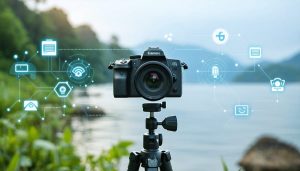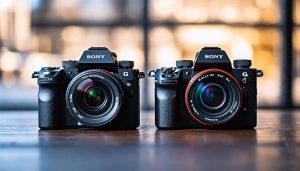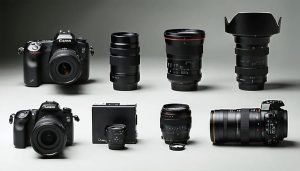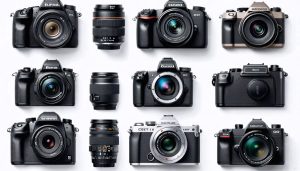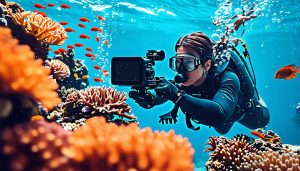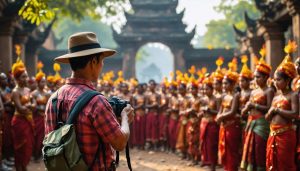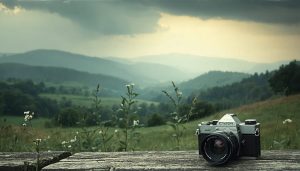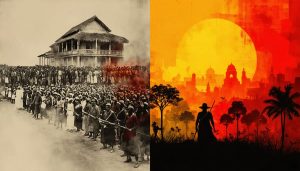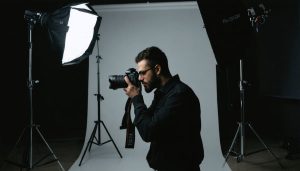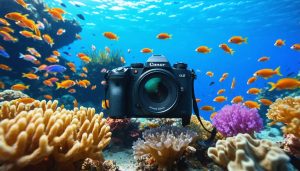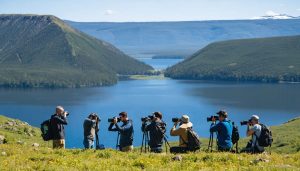
Professional photographers recognize that exceptional commercial work demands precision equipment and careful consideration of gear choices. From high-resolution medium format cameras to specialized lighting systems, commercial photography equipment represents a substantial investment that directly impacts image quality and workflow efficiency. Understanding your photography gear essentials allows strategic decisions about whether to purchase or rent specific pieces.
Today’s commercial photography landscape requires a sophisticated arsenal: tethering systems for real-time client feedback, professional-grade strobes for consistent lighting, and an array of specialized lenses for various commercial applications. This equipment not only ensures technical excellence but also provides the versatility needed to meet diverse client demands – from product photography requiring macro capabilities to architectural shoots demanding tilt-shift functionality.
Rather than immediately investing tens of thousands in ownership, many professionals optimize their equipment strategy through a combination of owned core gear and strategically rented specialized tools. This hybrid approach maintains creative flexibility while managing overhead costs, particularly for equipment that may only be needed for specific commercial projects.
Essential Commercial Photography Equipment to Rent
Professional Camera Bodies
When it comes to professional-grade cameras, rental services typically offer flagship models from industry leaders Canon and Sony. Popular choices include the Canon EOS R5, known for its exceptional 45MP sensor and 8K video capabilities, and the Sony A7R IV, featuring an impressive 61MP resolution. For those preferring the DSLR format, the Canon 5D Mark IV and Nikon D850 remain sought-after options. Most rental houses maintain their bodies in excellent condition, regularly servicing and updating firmware. When renting, you’ll typically receive the camera body, battery, charger, and memory card – though it’s wise to bring backup batteries and cards. Many services also offer insurance options for added peace of mind during your rental period.
Commercial-Grade Lenses
Commercial photographers rely heavily on specialty lenses to achieve their distinct visual objectives. The workhorse of product photography is typically the 100mm macro lens, offering exceptional detail and minimal distortion for close-up shots. For architecture and real estate work, tilt-shift lenses like the 24mm TS-E allow for perspective control and distortion correction. Portrait photographers often gravitate toward the 85mm f/1.4 for its superior bokeh and flattering compression, while fashion shoots might employ the versatile 24-70mm f/2.8 for its range and consistent quality. Food photographers particularly value the 60mm macro for its ability to capture textures and details without crowding the subject. These professional-grade lenses feature robust weather sealing, precise autofocus systems, and superior optical elements that justify their higher price points.
Lighting Equipment
Professional lighting equipment forms the backbone of commercial photography, with studio strobes and continuous lighting systems available to suit various shooting scenarios. Industry-standard options like Profoto B1X and Broncolor Siros L offer powerful, reliable flash output with wireless control capabilities. For continuous lighting, LED panels from brands like Aputure and ARRI provide consistent illumination ideal for both photo and video work.
Essential modifiers include softboxes, beauty dishes, and octaboxes for creating flattering light spreads, while barn doors and snoots help control light direction precisely. Most rental houses stock comprehensive modifier kits compatible with their strobe systems. Grid attachments and colored gels are typically included, allowing photographers to shape and modify light characteristics to achieve their creative vision.
Many rental facilities also provide complete lighting packages that include stands, sandbags, and necessary cables, making it convenient to assemble a full studio setup for specific project needs.
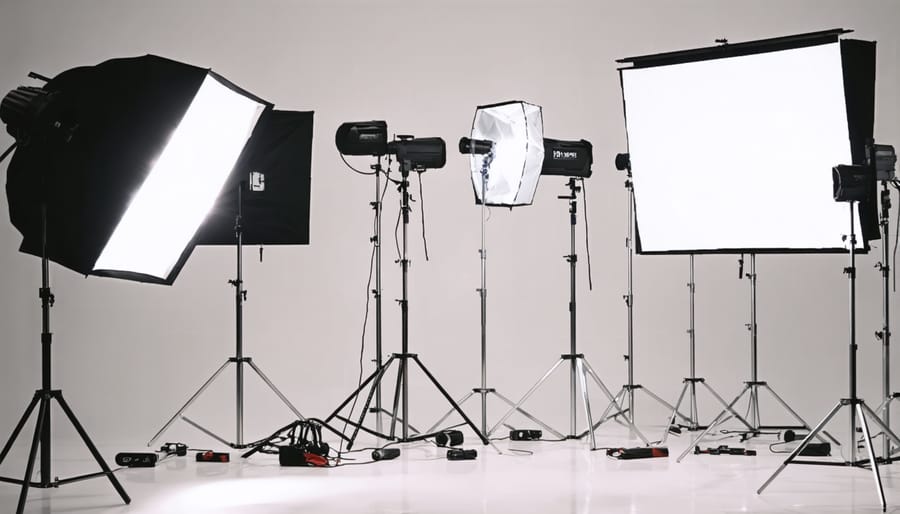
Support and Grip Equipment
Support equipment forms the backbone of any commercial photography setup, with tripods being the most essential rental item. Professional-grade tripods from brands like Gitzo and Really Right Stuff provide rock-solid stability for long exposures and precise compositions. Light stands are equally crucial, with C-stands being the industry standard due to their versatility and sturdy construction. For overhead shots, boom arms and grip heads allow creative positioning of lights and modifiers. Don’t overlook specialized items like sandbags for stabilizing stands, backdrop support systems for studio work, and rolling equipment carts for easy transport between locations. Many rental houses also offer grip kits that include clamps, brackets, and mounting solutions to secure equipment in challenging shooting situations.
Where to Rent Commercial Photography Equipment
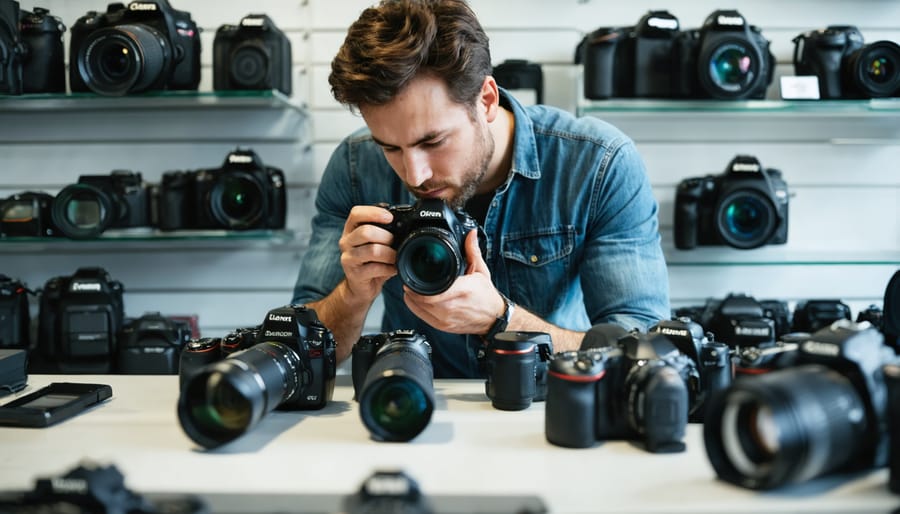
Local Camera Shops
Local camera shops offer unique advantages that online rental services can’t match. The ability to physically inspect equipment before renting, immediate access to gear, and face-to-face technical support make brick-and-mortar stores invaluable resources for photographers.
One significant benefit is the opportunity to build relationships with knowledgeable staff who can provide personalized recommendations and troubleshooting assistance. Many local shops also offer impromptu tutorials on equipment usage, ensuring you’re comfortable with the gear before leaving the store.
While prices may be slightly higher than online options, the added value of instant availability and hands-on experience often justifies the cost. Local stores typically offer same-day rentals and quick replacements if equipment issues arise during your rental period.
Consider joining your local shop’s membership program, as many offer discounted rates and priority access to new equipment. Additionally, building a good relationship with your local store can lead to flexibility in rental periods and potential deals on long-term rentals.
However, inventory may be more limited compared to online retailers, so it’s advisable to reserve equipment well in advance, especially for popular items or during peak seasons.
Online Rental Services
Online rental services have revolutionized how photographers access professional equipment, offering convenience and flexibility for both short-term projects and extended shoots. Leading platforms like LensRentals, BorrowLenses, and Adorama Rental Co. provide extensive catalogs of cameras, lenses, lighting equipment, and accessories from top manufacturers.
These services typically offer nationwide shipping with protective cases, insurance options, and flexible rental periods ranging from a few days to several weeks. Most platforms feature user-friendly interfaces where you can browse equipment specifications, check availability, and schedule rentals with just a few clicks.
What sets modern rental services apart is their commitment to maintenance and quality control. Equipment undergoes thorough testing and cleaning between rentals, ensuring you receive gear in pristine condition. Many platforms also offer damage protection plans and 24/7 customer support for peace of mind during your rental period.
Before renting, compare prices across platforms and watch for seasonal promotions. Some services offer membership programs with benefits like priority booking and discounted rates for frequent renters. Remember to factor in shipping times and costs when planning your rental schedule.
Peer-to-Peer Equipment Sharing
The photography industry has embraced the sharing economy with peer-to-peer equipment rental platforms, offering photographers flexible and often cost-effective alternatives to traditional rental houses. Platforms like KitSplit, ShareGrid, and Fat Llama connect gear owners with renters, creating a community-driven marketplace for professional photography equipment.
These platforms typically offer significant advantages over conventional rentals. First, they often feature competitive pricing since individual owners can set their rates. You’ll frequently find unique or specialty items that might not be available through traditional rental houses. The local nature of these platforms also means you can potentially arrange face-to-face meetings with owners, inspect equipment before renting, and get firsthand insights about the gear.
Insurance and security measures are usually built into these platforms, protecting both parties during transactions. Many services verify users, require deposits, and offer protection plans. This creates a safe environment for sharing valuable equipment while building trust within the photography community.
For equipment owners, these platforms provide an opportunity to offset gear costs by renting out rarely used items, making expensive equipment more accessible to everyone in the industry.
Production Houses
Production houses offer a comprehensive solution for photographers needing high-end commercial equipment. These professional rental facilities typically maintain extensive inventories of top-tier gear, from medium format cameras to specialized lighting systems and sophisticated studio accessories.
What sets production houses apart is their full-service approach. Many offer equipment delivery, on-site technical support, and backup gear availability—essential features for critical commercial shoots where equipment failure isn’t an option. They often maintain their equipment meticulously, with regular calibration and testing to ensure everything performs flawlessly.
While rental rates from production houses tend to be higher than peer-to-peer services, they offer valuable advantages like insurance coverage, 24/7 emergency support, and the ability to bundle equipment with studio space. Many also provide pre-rental equipment testing sessions, allowing photographers to familiarize themselves with gear before the actual shoot.
Leading production houses in major cities often cultivate relationships with regular clients, offering preferential rates and priority access to new equipment. For complex commercial projects, these established relationships can prove invaluable, especially when last-minute equipment needs arise.
Smart Rental Strategies for Commercial Photographers
Cost Analysis: Rent vs. Buy
Making the decision between renting and buying commercial photography equipment requires careful consideration of several key factors. The general rule of thumb is to consider purchasing if you’ll use the equipment at least 10-15 times per year, as this typically provides the best return on investment.
For essential photography equipment like your primary camera body and everyday lenses, purchasing usually makes more sense. However, for specialized gear like tilt-shift lenses, medium format cameras, or elaborate lighting setups, renting can be more cost-effective.
To determine the best approach, calculate the total cost of ownership (TCO) including purchase price, maintenance, insurance, and eventual depreciation. Compare this against rental costs for your projected usage. For example, a $2,000 lens used twice a year might cost $200 per rental, making it more economical to rent for several years before reaching the purchase price.
Consider also the pace of technological advancement. Camera bodies tend to become outdated faster than lenses, so you might opt to own quality glass while renting the latest camera bodies. Factor in storage space, transportation needs, and whether you have consistent work requiring specific equipment. Sometimes, a hybrid approach works best – owning your core kit while renting specialized gear for specific projects.
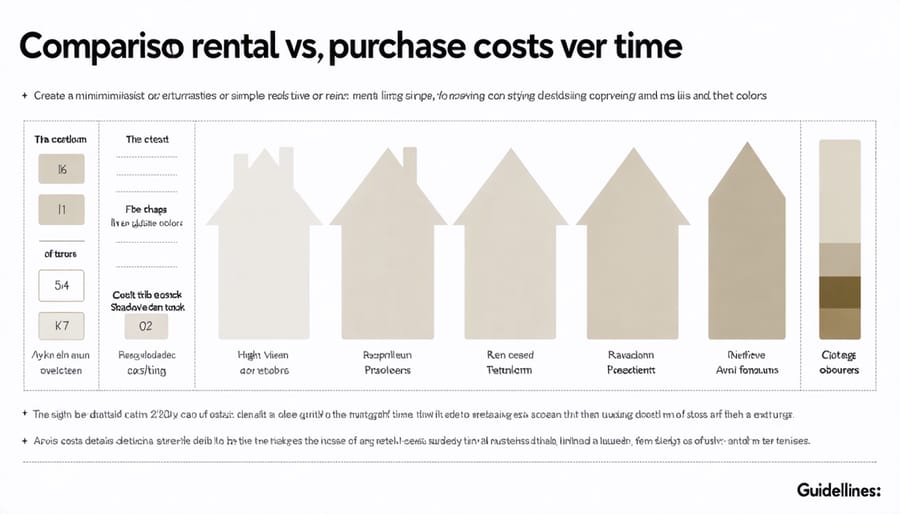
Insurance and Protection Options
When renting expensive commercial photography equipment, protecting your investment is crucial. Most reputable rental companies offer insurance options, typically called damage waivers or protection plans. These plans usually cover accidental damage, though they may exclude theft or negligence.
Basic protection plans often have a deductible ranging from $100 to $500, depending on the equipment value. Premium coverage options might offer zero-deductible protection but come with higher daily rates. Before declining rental insurance, check your existing photography business insurance or homeowner’s policy – some may already cover rental equipment.
Many rental houses partner with third-party insurers specializing in photography equipment coverage. These policies often provide more comprehensive protection, including worldwide coverage and protection against theft. Expect to pay around 10-15% of the rental cost for comprehensive coverage.
Some credit cards offer rental equipment protection as a benefit, similar to car rental insurance. However, always read the fine print, as coverage limits and excluded items vary significantly between card issuers.
For long-term rentals, consider getting a separate photography equipment insurance policy. While it requires more upfront planning, it can be more cost-effective than daily rental protection plans and offers consistent coverage across multiple rentals.
Remember to thoroughly document equipment condition during pickup and return, taking detailed photos to avoid disputes about damage responsibility.
Timing and Duration Strategies
Planning your rental periods strategically can significantly impact both your budget and project success. For most commercial shoots, consider booking equipment for an extra day before the actual shoot. This buffer allows you to thoroughly test the gear, ensure everything works properly, and familiarize yourself with any new equipment features.
Weekend rentals often offer the best value, as many rental houses provide special rates where you can pick up on Friday and return on Monday for a one-day rental price. For longer projects, weekly rates typically provide a substantial discount compared to daily rates, sometimes saving up to 30-40% on the total rental cost.
When scheduling pickup times, aim for early morning slots to maximize your rental period. Most rental houses operate on a 24-hour cycle, so picking up at 9 AM rather than 2 PM gives you those valuable extra hours at no additional cost. Similarly, if you’re shooting on location, factor in travel time and potential delays when determining your rental duration.
For seasonal equipment like specialized lighting for holiday shoots or underwater housing for summer campaigns, book well in advance – ideally 2-3 months ahead. During peak wedding season or major sporting events, popular items like premium telephoto lenses and medium format cameras can be in high demand, so early reservation is crucial.
Don’t forget to account for setup and breakdown time in your rental period, especially for complex lighting rigs or multi-camera setups.
Investing in commercial photography equipment requires careful consideration of your specific needs, budget, and long-term business goals. Throughout this guide, we’ve explored the essential gear that forms the backbone of professional photography, from high-end cameras and versatile lenses to lighting equipment and essential accessories.
Remember that building your commercial photography kit doesn’t have to happen all at once. Start with fundamental pieces that align with your most frequent assignments, and gradually expand your collection as your business grows. Quality should always take precedence over quantity, as professional-grade equipment will deliver consistent results and prove more cost-effective in the long run.
For those just starting their commercial photography journey, consider renting equipment for specialized shoots or testing gear before making significant investments. This approach allows you to experiment with different setups while managing costs effectively.
Regular maintenance and proper storage of your equipment are crucial for protecting your investment and ensuring reliable performance. Don’t forget to factor in insurance costs and backup equipment for critical shoots.
Ultimately, the best commercial photography equipment is what helps you deliver outstanding results to your clients while maintaining profitability. Stay informed about new technology developments, but don’t feel pressured to upgrade unless it truly benefits your work. Focus on mastering your current gear and letting your creativity and technical skills shine through in every project.

